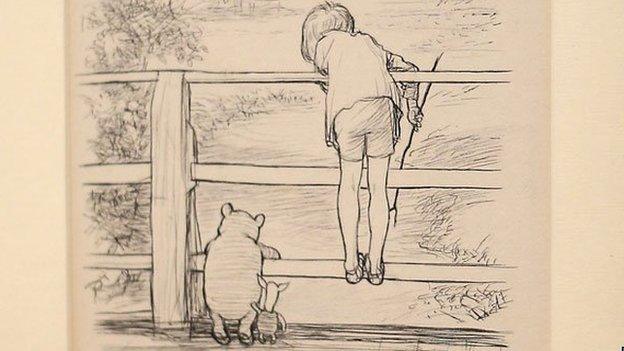Poohsticks formula prompts list of best places to play
- Published
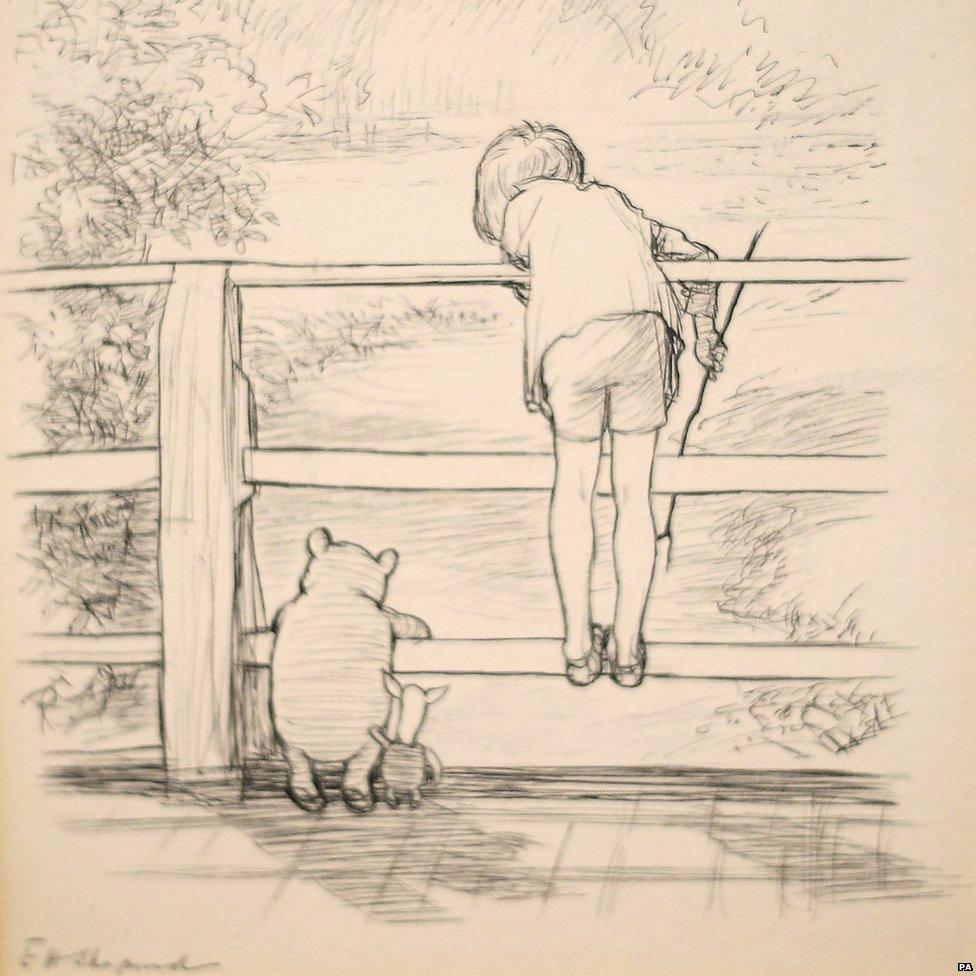
The original illustration of Pooh playing Poohsticks with Piglet and Christopher Robin recently sold for £314,500
A top engineer has devised a formula to aid budding players of Poohsticks - the game first devised by Winnie the Pooh.
The formula uses area, density and a drag coefficient to help competitors find the perfect twig.
It was written by Dr Rhys Morgan, from the Royal Academy of Engineering, and is to accompany a new book called Poohstickopedia.
Visit England then compiled a list of the top places around the country to play the classic pastime.
Competitors might be helped by the maths behind the formula devised by Dr Morgan.
He concluded, PP = A x I x Cd where PP is Perfect Poohstick, A is cross sectional area, I is density of the stick and Cd is the drag coefficient.

Sheepwash Bridge in Ashford-in-the-Water in the Derbyshire Peak District is at the top of the list of places where the formula can be tested.

The game was first devised by Winnie the Pooh in AA Milne's book The House at Pooh Corner and involves dropping sticks from a bridge.
Competitors then cross to the downstream side of the bridge and wait to see whose comes out first.
Pooh Bear originally stumbled across the game when he dropped a pine cone in a stream in Hundred Acre Wood only for it to float away.
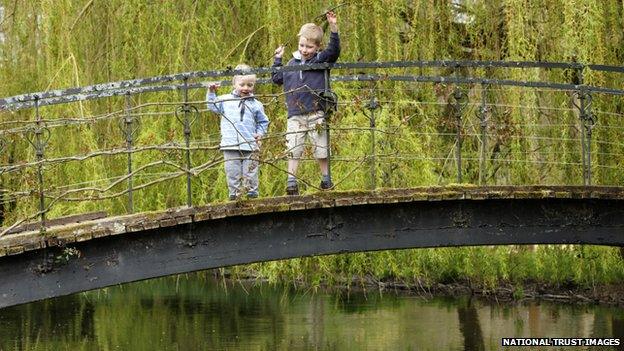
It is now a popular pastime as these two youngsters demonstrate on the River Test at Mottisfont near Romsey in Hampshire.
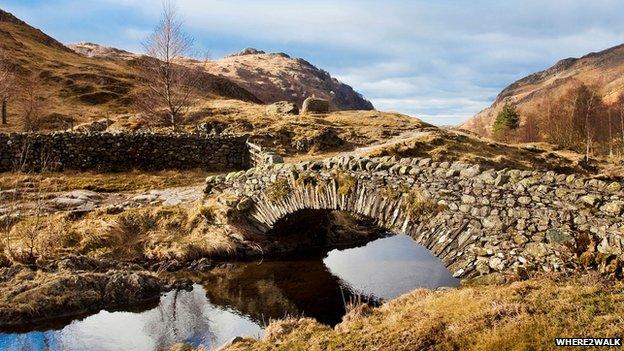
Pack Horse Bridge in Watendlath in the Lake District in Cumbria sits fourth on the Visit England list.
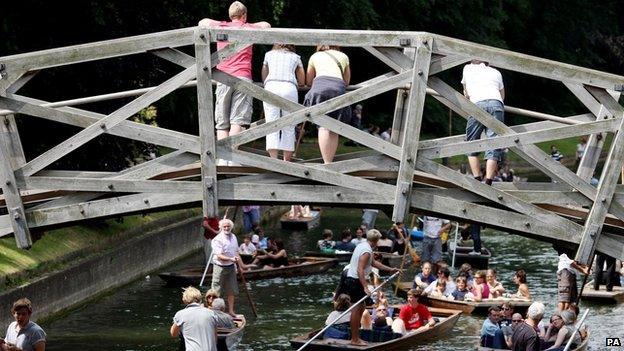
The National Trust house and gardens at Mottisfont, which date from the 13th Century, are fifth and Mathematical Bridge in Cambridge also provides another spot to play.
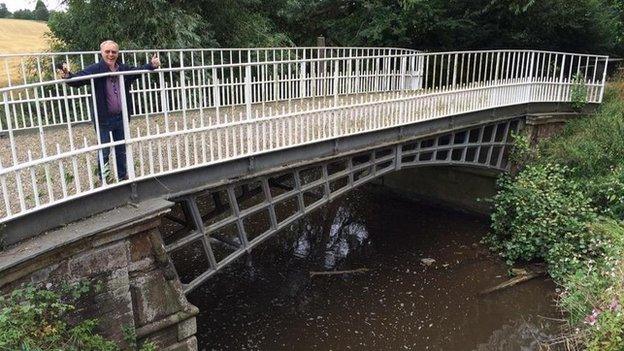
Thomas Telford was involved in the production of the 1813 cast-iron Cantlop Bridge over Cound Brook in Shropshire which sits at number 10 among the places to play Poohsticks.
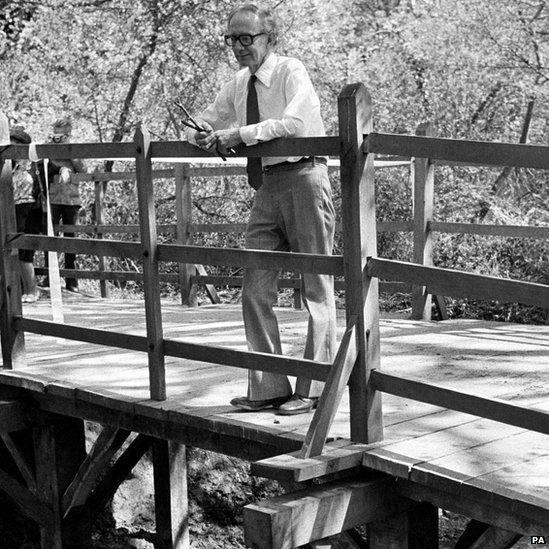
In Milne's book The House at Pooh Corner, EH Shepard illustrated the chapter "in which Pooh invents a new game and Eeyore joins in", based on Posingford Bridge near Milne's home in Ashdown Forest, East Sussex.
The bridge fell into disrepair but was restored and reopened by the author's son Christopher Robin Milne in 1979.
- Published7 January 2015

- Published2 June 2014

- Published9 December 2014
